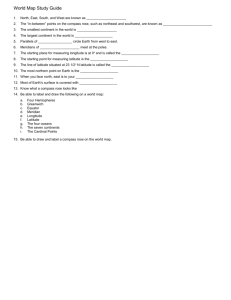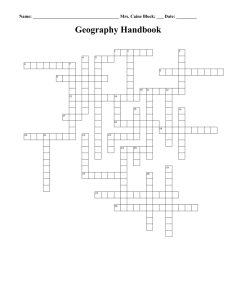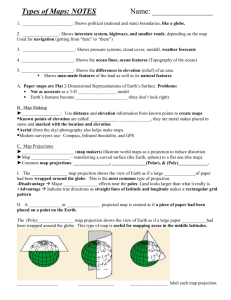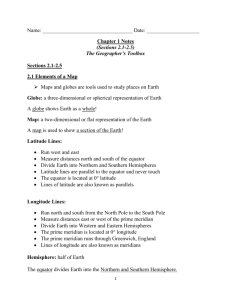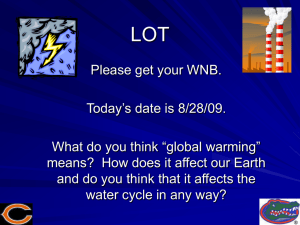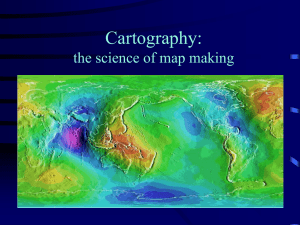Mapping Concepts & Features
advertisement
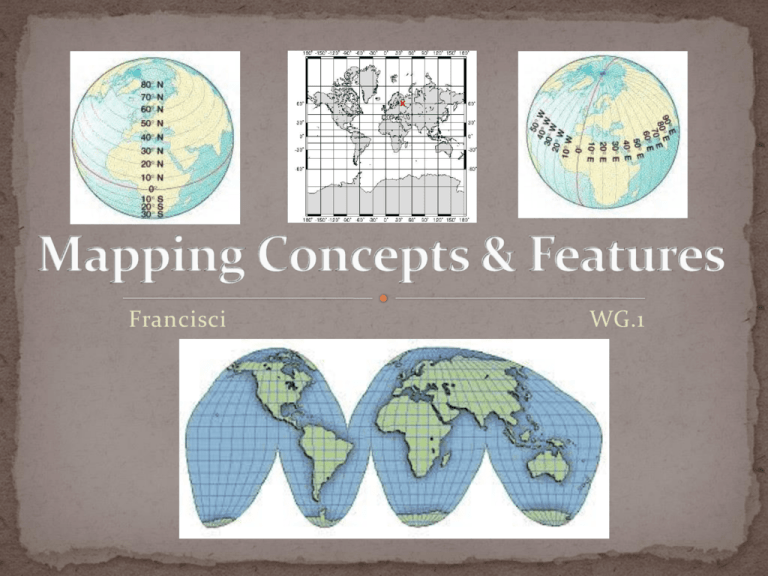
Francisci WG.1 Latitude: Location north or south of the Equator, measured by imaginary lines called parallels numbered in degrees north or south. • Parallel to equator. • Lat is flat! Equator: Zero degrees latitude, divides the earth into northern and southern hemispheres. Longitude: Location east or west of the Prime Meridian, measured by imaginary lines called meridians numbered in degrees east or west. • Vertical Lines • Longitude is long! Prime Meridian: Zero degrees longitude also known as the Greenwich Meridian (1884 – Greenwich Observatory near London. Created a universal day and 24 hour clock). Absolute Location: Relationship between distance on a map and the actual distance on the Earth (expressed mathematically). • Exact place, or location where someone, or something is on the Earth. Coordinates: The intersection of latitude and longitude lines, which identify the exact location of a place. Memphis, Tennessee is at 35° latitude and 90° west longitude. My house is at 1920 First Avenue. Relative Location: Place or position on the globe that is expressed in terms of one or more known locations. Examples: • The state of Kentucky is north of Tennessee. • The pool is a half mile north of the high school. • The library is between Smith and Jones Hall. Relative location means to locate a place in relation to another place whereas absolute location is locating a place using a coordinate system. • Example: St. Louis, Missouri • Absolute Location: 38°43' North 90°14' West. • Relative Location: Along the Mississippi River southeast of St. Charles. Scale: Indicates the relationship between the distances on the map and the actual distances on the Earth. • Will show what a measurement on a map is equal to in real life. Directional Indicator: A device drawn on maps to show direction. Compass Rose : Flower like design used to show directions usually showing 32 points on the compass. Shows orientation (object or person’s location relative to true north). Cardinal Directions: The basic directions on earth: north, south, east or west (found on a Compass Rose). Intermediate Directions: Directions that fall between cardinal directions: northwest, southwest, southeast and northeast (found on a Compass Rose). Map Projection: A way of drawing the round Earth on a flat surface. Map Distortion: Features such as size, shape, distance, or scale that can be measured accurately on Earth, but once projected on a flat surface, not all of these qualities are accurately represented. Why is a flat map of the Earth always distorted? A: It is difficult to show the surface of a round Earth on a flat map. Mercator Projection: • Grid projection that is useful for ship navigation. • Shows land shapes fairly accurately. • Size and distance not accurate. Polar Projection: • Circular projection best used for mapping hemispheres as well as plane/airline navigation. • Extremely distorted. Robinson Projection: Fish blow shaped projection best used for data representation; shows size and shape with less distortion. • Best for general purposes.
